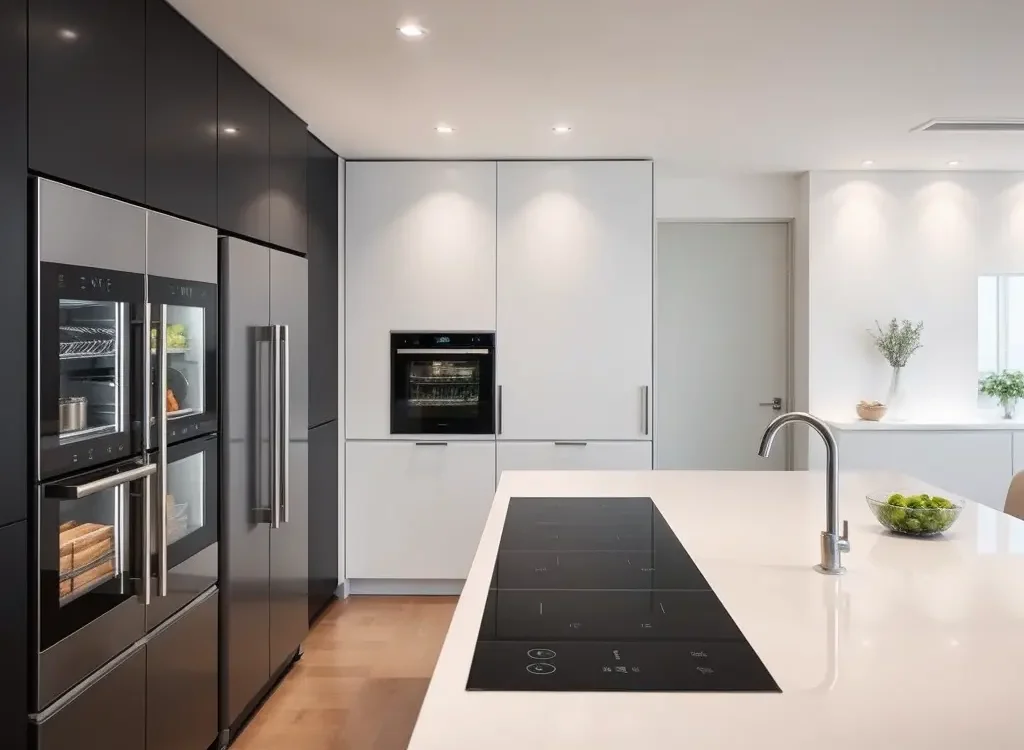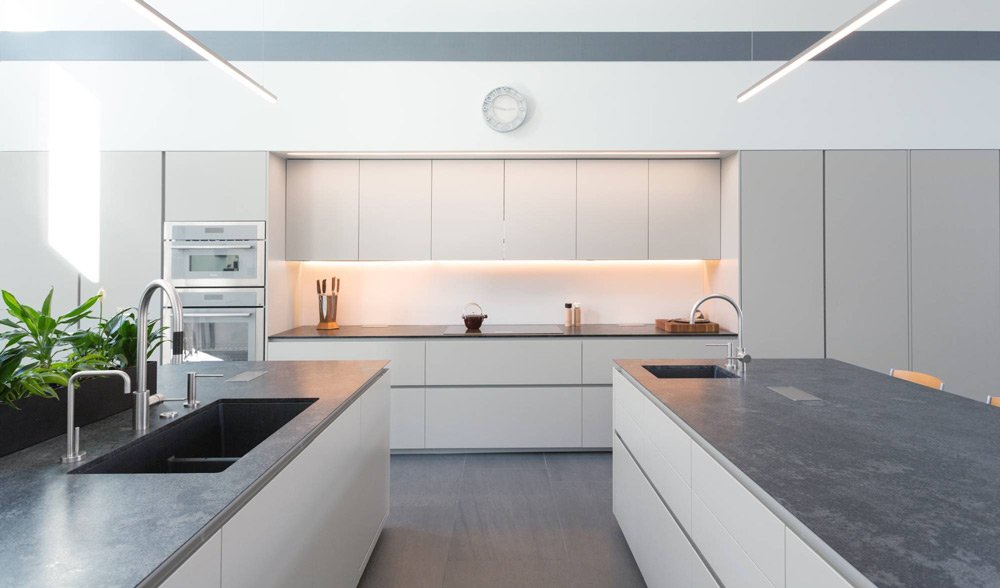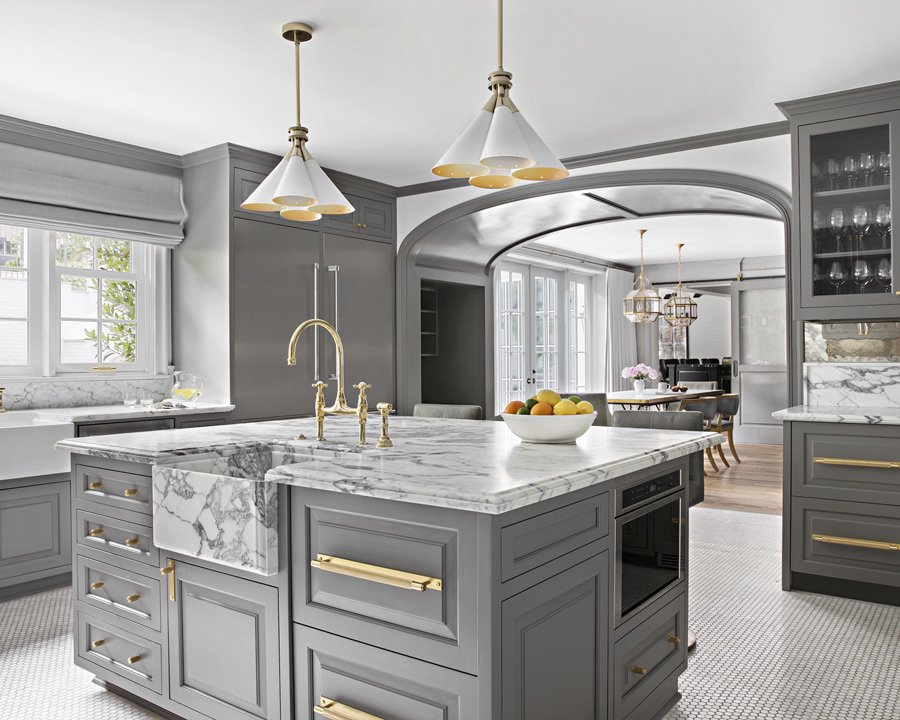The kitchen is the heart of the home. It’s where meals are prepared, conversations are held, and memories are made.
But how do you design a kitchen that is not only functional but also reflects your personal style?
This is where understanding different kitchen design styles comes into play. From the rustic charm of farmhouse kitchens to the sleek innovation of modern styles, there’s a design for every taste.
by Kelly Sikkema (https://unsplash.com/@kellysikkema)

In this article, we will explore various kitchen design styles. We’ll delve into their defining characteristics and how they blend aesthetics with functionality.
We’ll also discuss how to incorporate modern technology and sustainable practices into these styles.
Whether you’re renovating your kitchen or simply seeking inspiration, this guide will help you navigate the world of kitchen design.
By the end, you’ll be equipped with the knowledge to transform your kitchen into a space that is both luxurious and functional, a true reflection of your personal style.
The Essence of Kitchen Design Styles
Kitchen design styles are more than just aesthetic choices. They are a reflection of personal taste, lifestyle, and the overall ambiance one wishes to create in their home.
Each style carries its unique characteristics, from the materials and color schemes used to the layout and functionality. For instance, a farmhouse kitchen might feature warm wood tones and open shelving, while a modern kitchen might showcase sleek lines and high-tech appliances.
Understanding these styles is key to creating a kitchen that not only looks good but also serves your needs effectively. It’s about finding the right balance between beauty and practicality, creating a space where you can cook, dine, and socialize with ease and comfort.
Farmhouse Kitchen Ideas: A Blend of Rustic Charm and Comfort
Farmhouse kitchens are known for their warm, welcoming ambiance. They evoke a sense of nostalgia, harking back to simpler times when kitchens were the heart of the home.
Key elements of a farmhouse kitchen include rustic materials such as wood and stone, vintage-inspired appliances, and a large, inviting kitchen table. The color palette is often neutral, with shades of white, cream, and beige creating a light, airy feel.
Here are some ideas to inspire your farmhouse kitchen design:
- Use reclaimed wood for your countertops or open shelving.
- Opt for a classic farmhouse sink, known for its deep basin and apron front.
- Incorporate vintage elements, such as an antique stove or retro refrigerator.
- Choose warm, earthy tones for your color scheme.
- Add a touch of charm with gingham curtains or a rooster-themed backsplash.
by Les Anderson (https://unsplash.com/@lesanderson)

Coastal Kitchen Designs: Breezy Elegance by the Shore
Coastal kitchen designs are inspired by the sea and shore, creating a relaxed, vacation-like atmosphere. They are characterized by light, airy color schemes, natural materials, and nautical accents.
Key elements of a coastal kitchen include white or pastel cabinetry, open shelving, and a mix of textures such as wood, wicker, and glass. The color palette is typically light and breezy, with shades of white, blue, and sandy beige.
Here are some ideas to inspire your coastal kitchen design:
- Use a mix of white and blue for your cabinetry and walls.
- Incorporate natural materials such as rattan or bamboo in your furniture and accessories.
- Opt for a backsplash that mimics the look of sea glass or beach pebbles.
- Choose light, airy window treatments to maximize natural light.
- Add nautical accents such as ship lantern pendant lights or a seashell-themed backsplash.
by aboodi vesakaran (https://unsplash.com/@aboodi_vm)
Minimalist Kitchen Decor: The Art of Less is More
Minimalist kitchen decor is all about simplicity and functionality. It’s characterized by clean lines, a monochromatic color palette, and a clutter-free environment. The focus is on creating a serene, calming space that’s easy to clean and maintain.
Key elements of a minimalist kitchen include flat-panel cabinetry, sleek hardware, and a lack of ornate details. The color scheme is typically neutral, with shades of white, gray, and black.
Here are some ideas to inspire your minimalist kitchen design:
- Opt for flat-panel cabinetry with sleek, hidden hardware.
- Keep your countertops clutter-free and opt for built-in appliances.
- Choose a monochromatic color scheme with pops of color in your accessories.
- Use open shelving sparingly and focus on clean, unbroken lines.
- Opt for modern, energy-efficient appliances that blend seamlessly into your design.
by Janita Sumeiko (https://unsplash.com/@aajanita)

Traditional Kitchen Design: Time-Honored Elegance
Traditional kitchen design is a celebration of classic details, symmetrical layouts, and rich materials. It’s a style that’s timeless, elegant, and highly functional. The focus is on creating a warm, welcoming space that’s perfect for family gatherings and entertaining.
Key elements of a traditional kitchen include raised-panel cabinetry, ornate moldings, and a mix of natural materials like wood and stone. The color scheme is typically warm and inviting, with shades of cream, beige, and brown.
Here are some ideas to inspire your traditional kitchen design:
- Opt for raised-panel cabinetry with ornate moldings and trims.
- Choose a warm color scheme with shades of cream, beige, and brown.
- Incorporate natural materials like wood and stone in your countertops and flooring.
- Use classic lighting fixtures like chandeliers or pendant lights.
- Include a large, functional kitchen island for additional workspace and seating.
by Dane Deaner (https://unsplash.com/@danedeaner)
Rustic Kitchen Themes: Nature-Inspired Warmth
Rustic kitchen design is all about embracing the beauty of natural materials and a sense of rugged, unpretentious charm. It’s a style that’s warm, inviting, and full of character. The focus is on creating a space that feels like a cozy retreat, with a strong connection to the outdoors.
Key elements of a rustic kitchen include exposed wood beams, stone accents, and handcrafted furniture. The color scheme is typically earthy and natural, with shades of brown, green, and gray.
Here are some ideas to inspire your rustic kitchen design:
- Incorporate exposed wood beams and stone accents in your design.
- Choose a natural, earthy color scheme with shades of brown, green, and gray.
- Use handcrafted furniture and accessories for a unique, personalized touch.
- Opt for open shelving to display your favorite dishes and cookware.
- Include a farmhouse sink for a touch of country charm.
by Joel Filipe (https://unsplash.com/@joelfilip)

Modern Kitchen Styles: Sleek Innovation and Technology
Modern kitchen design is characterized by sleek lines, minimalist aesthetics, and a focus on functionality and efficiency. It’s a style that’s clean, uncluttered, and highly sophisticated. The emphasis is on creating a space that’s not only beautiful but also equipped with the latest technology and conveniences.
Key elements of a modern kitchen include high-gloss cabinetry, stainless steel appliances, and a monochromatic color scheme. The layout is often open and spacious, with plenty of storage solutions to keep the space tidy and organized.
Here are some ideas to inspire your modern kitchen design:
- Opt for high-gloss cabinetry and stainless steel appliances.
- Choose a monochromatic color scheme for a sleek, sophisticated look.
- Incorporate plenty of storage solutions to keep your space tidy and organized.
- Consider an open layout to create a sense of spaciousness.
- Include smart appliances and fixtures for added convenience and efficiency.
by charlesdeluvio (https://unsplash.com/@charlesdeluvio)

Balancing Aesthetics and Functionality in Kitchen Design
The key to a successful kitchen design lies in striking the right balance between aesthetics and functionality. A beautiful kitchen is a joy to behold, but if it doesn’t function well, it can quickly become a source of frustration.
When planning your kitchen design, consider how the space will be used. Think about the tasks that will be performed and plan the layout accordingly. This might involve considering the ‘kitchen work triangle’ – the optimal placement of the sink, stove, and refrigerator for efficient movement.
At the same time, don’t neglect the visual appeal of your kitchen. Choose a design style that reflects your personal taste and complements the overall aesthetic of your home. Consider the color scheme, materials, and finishes that will best achieve your desired look. Remember, a well-designed kitchen is both beautiful and functional.
Incorporating Personal Style with Modern Technology
Incorporating personal style into your kitchen design is about more than just aesthetics. It’s about creating a space that feels uniquely yours, a space that reflects your personality, your lifestyle, and your tastes. But how do you incorporate your personal style while also taking advantage of modern technology?
One way is to choose appliances and fixtures that match your design style. For example, if you prefer a traditional kitchen design, you might opt for a classic range with modern features like a convection oven or induction cooktop. On the other hand, if your style leans more towards the modern, sleek appliances with touch controls and smart technology might be more your speed.
Remember, your kitchen should be a reflection of you. Don’t be afraid to mix and match styles, colors, and finishes to create a space that feels truly personal. And with the wide range of technologically advanced appliances and fixtures available today, you can have a kitchen that’s not only stylish, but also highly functional and efficient.
Sustainable Practices in Kitchen Design
Sustainability is more than just a buzzword in today’s kitchen design styles. It’s a commitment to creating spaces that are not only beautiful and functional, but also kind to our planet. From the materials we choose to the appliances we install, every decision we make in our kitchen design can have an impact on the environment.
One way to incorporate sustainable practices into your kitchen design is by choosing eco-friendly materials. This could mean opting for countertops made from recycled glass, cabinets crafted from reclaimed wood, or flooring made from sustainable bamboo. These materials not only add unique beauty to your kitchen, but also reduce your environmental footprint.
Another key aspect of sustainable kitchen design is energy efficiency. By choosing Energy Star-rated appliances, LED lighting, and water-saving fixtures, you can significantly reduce your kitchen’s energy consumption. Not only is this good for the environment, but it can also save you money on your utility bills.
Conclusion: Crafting Your Ideal Kitchen Space
In conclusion, defining your kitchen design style is a journey of discovery. It’s about exploring different aesthetics, understanding your functional needs, and aligning these with your personal taste and lifestyle. Whether you’re drawn to the rustic charm of a farmhouse kitchen, the sleek innovation of modern styles, or the timeless elegance of traditional design, there’s a kitchen style that’s perfect for you.
Remember, the most successful kitchen designs are those that balance aesthetics with functionality, incorporate modern technology, and embrace sustainable practices. So take the time to plan, explore different kitchen design styles, and craft a space that truly feels like home














